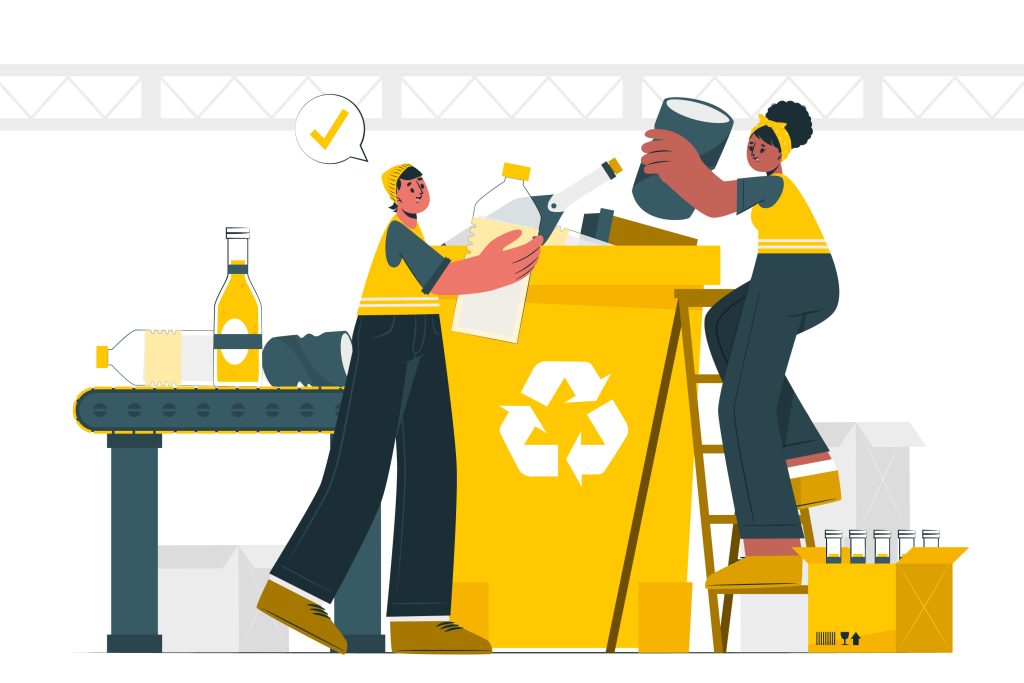Clearing The Clutter The Right Way

Today, properly disposing of waste is not just a rule-driven requirement—it’s a necessary aspect of both environmental and moral responsibility.
While typical household or office trash is usually harmless, hazardous surplus chemicals waste is a different story. Improper handling of hazardous materials can harm human health, contaminate ecosystems, and even lead to regulatory fines or lawsuits.
Regardless of whether you’re a residential homeowner, small business owner, or part of a larger industrial enterprise.
This guide will walk you through the right way of “clearing the clutter”—particularly when said clutter-clearing strategies are filled with hazardous waste.
From safe storage and handling to recycling and disposal, to cost-effective solutions, we have it all covered.
Environmental Impact Of Improper Hazardous Waste Disposal
Waste that is hazardous can be chemicals, batteries, solvents, paints, detergents, pesticides, medical wastes, and even some types of electronic waste. If not disposed of, the impact can be devastating:
- Soil and Water Contamination: Chemicals infiltrate the earth, polluting groundwater sources or nearby rivers and lakes.
- Air Pollution: Poor incineration or leakage of volatile materials can release toxic gases into the atmosphere.
- Wildlife Harm: Poisoned environments will kill off natural wildlife and upset ecological balances.
- Public Health Threats: Exposure to toxic waste has been known to lead to chronic respiratory illness, cancer, and disability at birth for communities in the immediate vicinity.
Proper handling of hazardous waste isn’t just common sense—its importance is to the health and welfare of our environment, world, and ourselves.
Safe Handling & Storage Of Hazardous Waste
Hazardous waste management begins with proper handling and storage procedures to avoid exposure and accidents.
Here is a step-by-step guide on best practices:
1. Identify The Workplace Risks
Conduct a comprehensive hazard analysis to identify:
- What hazardous materials are present?
- Where are they stored?
- Who uses them, and how often?
This helps in implementing certain safety controls.
2. Properly Train Employees
Every employee who handles hazardous chemicals should be provided with:
- Information regarding the chemical nature
- Safety data sheets (SDS)
- Emergency response protocols
Training must be routinely updated and documented.
3. Plan Ahead For Emergencies
Don’t wait until disaster happens. Be prepared:
- Keep spill kits and emergency showers on hand
- Maintain well-established evacuation protocols
- Post emergency contact information
4. Use Personal Protective Equipment (PPE)
Always demand proper PPE based on the material:
- Gloves (chemical-resistant)
- Safety goggles
- Respirators or masks
- Protective clothing
5. Label All Hazardous Materials Clearly
Every container must be:
- Chemically named
- Identified with hazard symbols (flammable, toxic, corrosive, etc.)
- SDS is nearby with it
6. Store Properly
Follow these best practices:
- Store incompatible materials in different storage areas
- Secondary containment must be used for liquids
- Store in good ventilation, away from heat sources
7. Use Materials Only For The Purpose
Misuse of a chemical or combination with other chemicals may produce dangerous reactions.
8. Do Not Eat Or Drink In The Area Of Hazardous Materials
Hand-to-mouth contact will occur with ease, contaminating.
9. Read Labels Before Handling
Ensure users fully comprehend material characteristics, use instructions, and emergency response.
10. Report Problems Immediately
Packages with signs of damage, leaks, or corrosion should be labeled and replaced. Spills must be cleaned up immediately, following the spill-response procedure.
Recycling Hazardous Waste: A Greener Option

Not all hazardous waste deposal in a landfill. Some can be safely and efficiently recycled, protecting the environment and often saving money.
● Filtration
This method is used to remove impurities from solvents or liquids in order to reuse the material. Industrial solvents, for instance, can be passed through a filter so that heavy metal or particulate matter is removed.
● Distillation
Distillation is common in industry and the lab. It separates materials on the basis of boiling points. Distillation is most effectively applied to solvent recovery, alcohols, and oils.
● Fuel-Blending
Certain flammable hazardous wastes—such as certain paints, oils, and solvents—are miscible with other fuels and burn in specialty industrial furnaces. This conserves energy and reduces waste volume.
Hazardous Waste Disposal: The Right Way
Recycling is not always possible; therefore, disposal is necessary. However, improper disposal is illegal and unsafe.
Do the following:
● Waste Must Be Stored In Proper Containers
- Leaky, heavy-duty containers should be utilized
- Avoid using old or reused containers without hazard markings for hazardous waste
● Label Clearly
All waste containers must be labeled with:
- Contents and hazard category
- Date of initiation of accumulation
- “Hazardous Waste” signs
● Consolidate Where Possible
In a bid to minimize the number of containers and decrease handling risk, merge compatible wastes—but only if they are first confirmed safe to be combined.
● Follow Local Regulations
Every region has its laws regarding hazardous waste:
- Transportation permits
- Licensed disposal facilities
- Reporting
Always keep up to avoid penalties and legal concerns.
● Consult Professional Disposal Services
Don’t risk it. Qualified hazardous waste management firms provide:
- Safe removal
- Compliance with regulations
- Accurate documentation
Economic Solutions For Hazardous Waste Management
Waste Disposal of hazardous waste is costly, but sound practices can cut costs without diminishing safety or compliance.
● Don’t Overbuy Materials
Purchase only what you will actually use. Overbuying equates to expired or unused material that is wasted dollars.
● Reuse Leftover Product
If you possess usable, unopened materials:
- Distribute within your company
- Donate to community or educational programs locally (if legal/safe)
● Choose The Correct Professional Services
All disposal services are not created equal. Look for:
- Transparent pricing
- Adjustable service plans
- Record of demonstrated compliance
Certain services offer recycling credits or rebates that will lower your waste disposal costs.
Cleaning Out Hazard
Disposing of hazardous clutter-clearing strategies the right way is not merely about cleaning up—serious business about preserving your health, the environment, and your business.
By:
- Properly handling and storing waste
- Keeping recycling options in mind
- Complying with regulatory disposal guidelines
- Promoting cost-saving practices
—you can transform a potentially hazardous mess into a beacon of environmental responsibility and workplace safety.
The next time you’re faced with a problem that includes hazardous waste, remember: it’s not just about throwing stuff out.
It’s about doing it right—because the right way is the only way when lives and ecosystems are involved.
Read Also:

























Leave A Reply